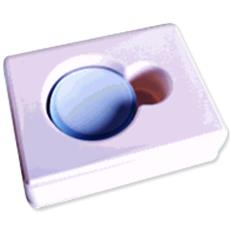Product Profile of Inorganic Membrane for Laboratory Filtration Applications
Whatman Group offers Inorganic Membrane for Laboratory Filtration Applications. Whatman Group manufactures English mill making fine, handcrafted paper. The Inorganic Membrane for Laboratory Filtration Applications has a precise, no deformable honeycomb pore structure with no lateral crossovers between individual pores, which filters at precisely the stated cut-off, allowing no larger sized particles to pass through the membrane. The Inorganic Membrane is composed of a high purity alumina matrix that is manufactured electrochemically. The membrane also exhibits low protein binding, has minimal auto fluorescence, is non-toxic, and supports cellular growth.
Key Features of Inorganic Membrane for Laboratory Filtration Applications
- High pore density and narrow pore size distribution make it an extremely precise membrane
- Wide solvent compatibility reduces the need to stock a variety of membranes in the laboratory
- No additives used in the manufacturing process ensures minimal extractable and no sample contamination
- Extremely low protein binding minimizes sample loss
- Virtually transparent when wet making it ideal for microscopy studies.
Product Specification of Inorganic Membrane for Laboratory Filtration Applications
- Thickness:60
- Diameter:43
- Type:Anopore aluminum oxide
- Body Materials:Polypropylene
- Construction:Thermal weld
- Protein adsorption:Low
- Burst Strength:65 to 110
- Impedance Matching:40
- Porosity:25 to 50%
- Autoclavable:No
- Refractive Index:1.6
